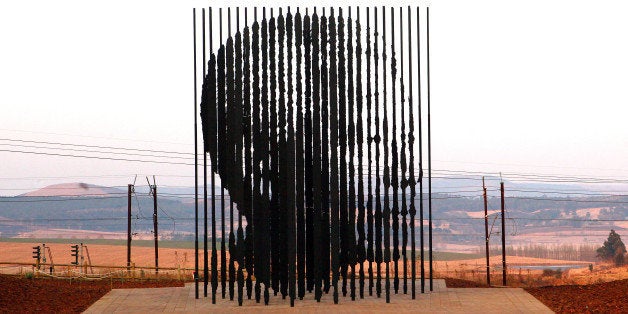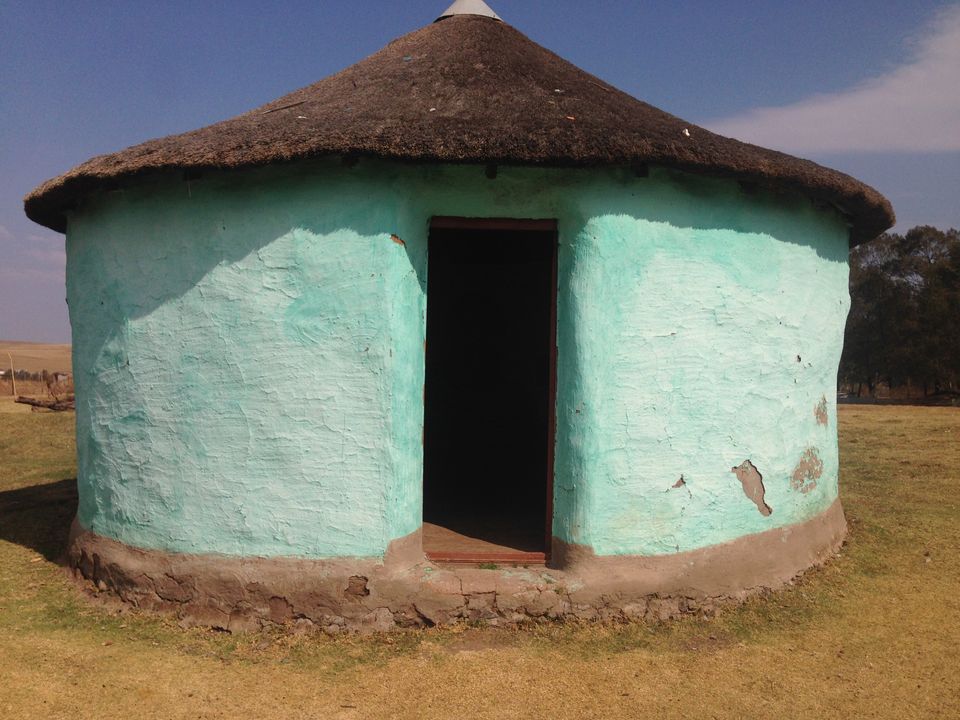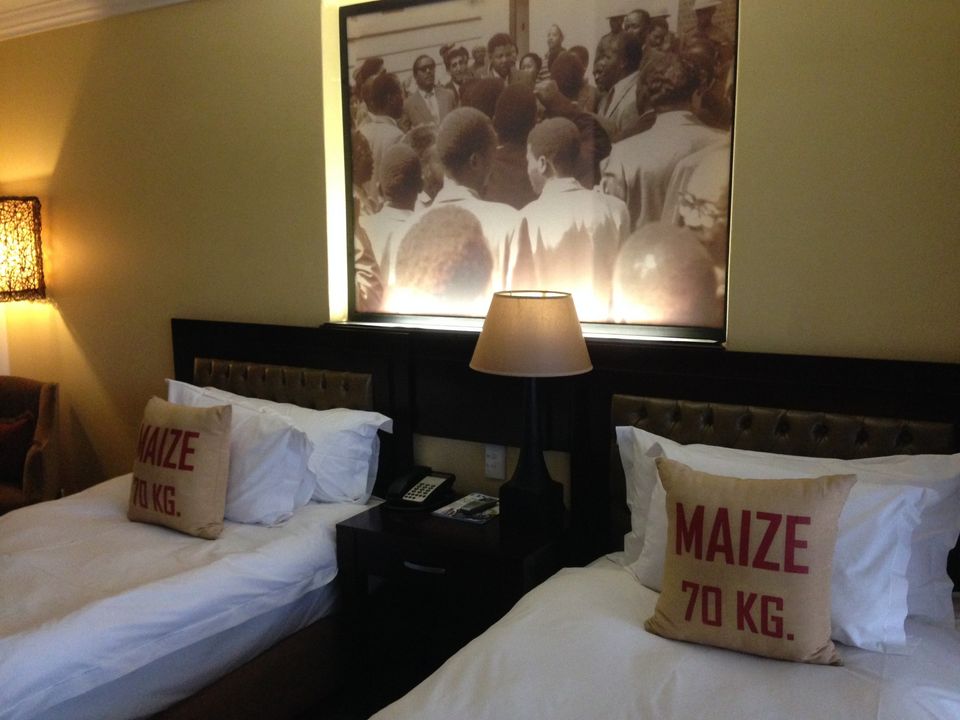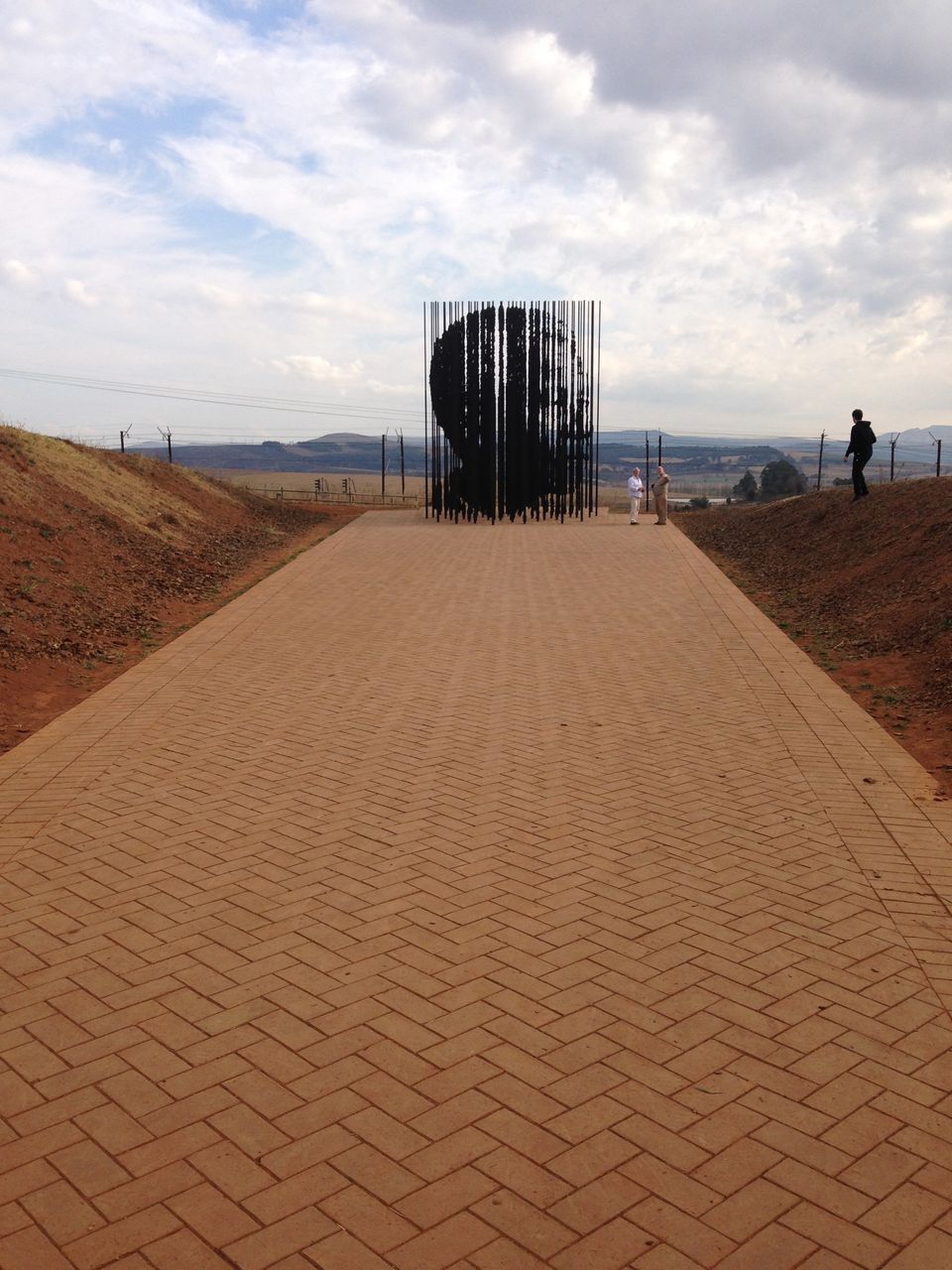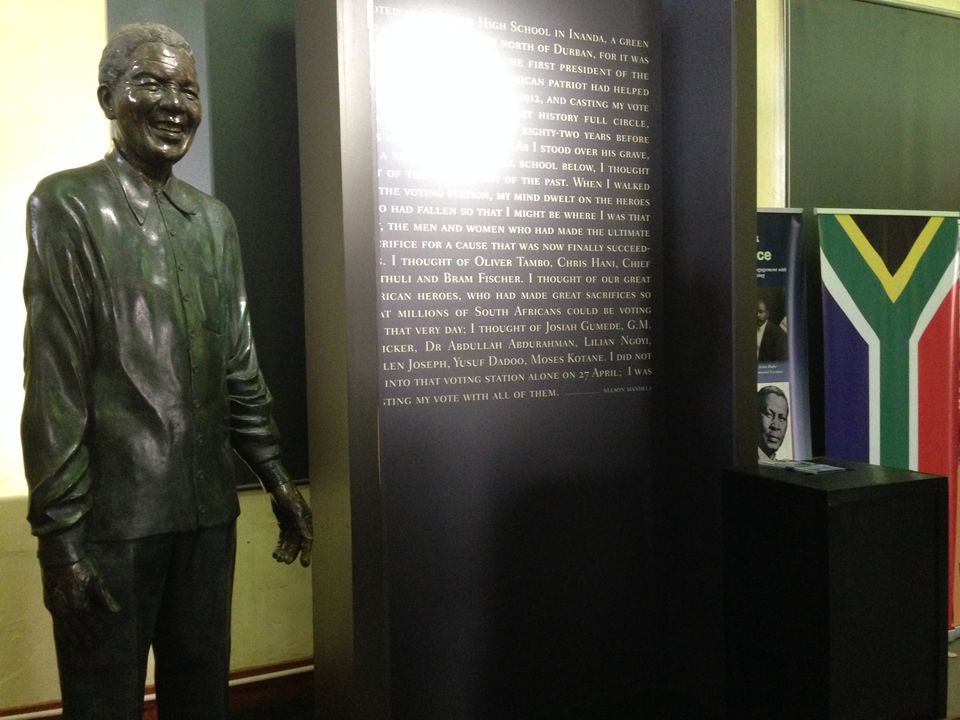On this day in 1990, massive crowds gathered throughout South Africa to celebrate the release of the nation's beloved Nelson Mandela.
It marked a momentous occasion and an even more significant moment for Mandela, a vocal and empowering leader who, because of these same traits, had been imprisoned for 27 years and was finally freed.
For nearly three decades, Mandela was removed from public contact and lived within the confines of various small, cement-covered cells after being convicted for conspiracy of overthrowing the government and speaking out against a racist regime that denied civil and human rights to black South Africans.
However, Mandela’s legacy did not suffer from similar limitations. Instead, his great efforts in the abolition of apartheid inspired and motivated many -- in South Africa and beyond -- who have hailed him as their hero.
Upon his release, Mandela went on to prove that years of solitary confinement and imprisonment were no hindrance to the profound power and will he had in his fight for racial equality.
The anti-apartheid leader continued his mission to unite a racially divided country, and -- with the help of many influential men and women, both before his imprisonment and after -- led the nation through a tremendous liberation movement.
Along the way, his accomplishments earned him great accolades, including a Nobel Peace Prize that sealed his status as an internationally recognized trailblazer, and shortly after, a winning election that crowned him as South Africa’s first democratically elected and first black president.
Mandela died on Dec. 5, 2013, but he continues to be celebrated by the millions of people whose lives were forever changed for the better. His unprecedented wisdom, courage and leadership are unlike many others and his journey was arduous but fulfilling.
Because of this, South Africans honor the civil rights leader in a number of ways that pay homage to his contributions and honor his long-lasting legacy. Many places Mandela visited, lived or occupied have been preserved and transformed into national historic landmarks.
Meanwhile, an impressive and growing portfolio of public art works and heritage sites show the pride and respect South Africans share for Mandela and, by doing so, powerfully retell his challenging and courageous long walk to freedom.
Take a look at some of the images below and see the people and iconic public places in South Africa honoring Mandela:
Nelson Mandela Centre Of Memory
Lilly Workneh/The Huffington Post
A powerful portrait of Nelson Mandela is hung on the walls of the
Nelson Mandela Centre of Memory, which was established in 1999 and served as the leader's post-presidential office. Now, the venue invites visitors to actively engage with its robust catalogue of digital and physical artifacts honoring Mandela's legacy.
Nelson Mandela's Post-Presidential Office
Lilly Workneh/The Huffington Post
Decorated with the same furniture he once used, this room marks Mandela's post-presidential office, located at the Nelson Mandela Centre of Memory. It was once the headquarters for Mandela and his staff, who primarily used the space to conduct and deliver charitable work. While its barred perimeter now prevents visitors from roaming the room, tour guides and written information still provide an inside look.
Nelson Mandela's Childhood Home
Lilly Workneh/The Huffington Post
A 9-year-old Nelson Mandela moved to the rural city of Mqhekezweni, a settlement far off the main road hard to reach by car. It was here, in this blue rondavel and its surrounding settlement, that Mandela was raised by a local regent named Chief Jongintaba, a tribal king who had great influence over the future leader, especially following his father's death in 1930.
The Town Of Mqhekezweni
Lilly Workneh/The Huffington Post
These huts are the homes of Mandela's childhood neighbors in the town of Mqhekezweni. The land is still occupied by South Africans, while Mandela's personal hut remains vacant and is open to the public.
Grounds Of School Mandela Once Attended
Lilly Workneh/The Huffington Post
These cinder blocks mark the land where Mandela's elementary school once stood. It was on his first day at this school that a teacher, who gave each African student an English name, appointed Mandela -- whose birth name was Rolihlahla -- to be called "Nelson" as part of a custom influenced by British colonials. Now, a museum and art performances honor the land where Mandela once attended school, and nearby students and schools frequently visit the area.
Liliesleaf: A Place Of Liberation
Lilly Workneh/The Huffington Post
Liliesleaf marked the compounds where prominent leaders of South Africa's liberation struggle, including Nelson Mandela, sought shelter and secretly planned ways to combat apartheid. Police raided the farm in 1963 and ultimately captured and tried 12 men in what is known as the Rivonia Treason Trial. The land is now preserved as a historic landmark that has been transformed into many moving and still tributes honoring the men who risked their lives for freedom, and pays special recognition to Mandela's contributions.
Nelson Mandela's Cell At The Palace Of Justice
When Mandela, along with several other men, were accused of treason during the Rivonia Trial, he and other political prisoners were held in a cell at the Palace of Justice. The walls of the cell were used as documentation of their plans and hopes for freedom, including one moving quote that read, "My dream is to be free, one love." The cell, which was a cold space made of concrete, is considered by some to be a heritage site and many encourage its preservation.
Nelson Mandela's Cell At The Palace Of Justice
Lilly Workneh/The Huffington Post
An outline for "The Freedom Charter," created by Mandela and his cell mates, is written on the walls of the cell.
The Constitution Hill Precinct
Lilly Workneh/The Huffington Post
During apartheid, the Constitution Hill precinct in Johannesburg mainly served as a prison for freedom fighters and passive resisters who fought back against the oppressive regime. Many political prisoners were held here, including Mandela, and lived in poor conditions and cramped spaces as portrayed by the props presented in memory of those who were imprisoned.
The Constitution Hill Precinct
Lilly Workneh/The Huffington Post
Powerful quotes from Mandela plaster the walls and architecture throughout the precinct and adjacent museum. They reflect some of the most trying and tumultuous moments in Mandela's life.
Nelson Mandela's Home
Lilly Workneh/The Huffington Post
Nelson Mandela lived in this home with his family from 1947 until his imprisonment in 1964, and later returned after his release in 1990. The house, which is located in the city of Soweto, is down the street from where Archbishop Desmond Tutu once lived and is now open to the public. Visitors are taken on tours around the site and are able to roam freely through the home, which still includes many of the same furniture and items that originally belonged there.
Nelson Mandela's Home
Lilly Workneh/The Huffington Post
Many artifacts, furniture and paintings still exist inside Mandela's home. While many items have been refurbished, some remain in their original form, untouched for more than several decades.
The 'Shadow Boxer' Statue
Lilly Workneh/The Huffington Post
A 20-foot-tall statue of Mandela was built outside of the Chancellor House, a building that once housed Mandela and fellow activist Oliver Tambo's law firm. The towering structure, known as the "Shadow Boxer" statue, symbolizes Mandela's fight for freedom and is the second largest sculpture of Mandela in Johannesburg.
Soweto Hotel
Lilly Workneh/The Huffington Post
Rooms at the Soweto Hotel in South Africa are decorated with framed photographs portraying a young, spirited Mandela. Soweto was a blacks-only township where Mandela once lived.
Soweto Hotel
Lilly Workneh/The Huffington Post
Hallways at the Soweto Hotel are named in honor of Mandela and commemorate his long journey in fighting for freedom.
Nelson Mandela Capture Site
Lilly Workneh/The Huffington Post
A towering steel sculpture depicting Mandela's profile marks the capture site where the South African leader was taken into custody and began his 27 years of imprisonment. It is located on a lonely road in the city of KwaZulu-Natal.
Ohlange Institute Where Mandela First Voted
Lilly Workneh/The Huffington Post
On April 27, 1994, four years after his release from prison, Mandela traveled to the Ohlange Institute in South Africa's Ulwazi district to cast his vote as part of South Africa’s landmark democratic elections. It was the first time Mandela had voted, and now the site serves as a proud commemoration of the significant moment in history.
Port Elizabeth
Lilly Workneh/The Huffington Post
The beautiful city of Port Elizabeth is only a short plane ride from Johannesburg and easily accessible and accommodated through South African Airways. The city is home to the Red Location Museum, which tells the story of the struggle against apartheid in the country's Eastern Cape -- and houses the second largest flag in Africa.
67 Public Art Works
Lilly Workneh/The Huffington Post
Sixty-seven public art works decorate landmarks and roads in Port Elizabeth, symbolizing Mandela's 67 years of work dedicated to the end of apartheid in South Africa. All of the art works are designed by local artists from the Eastern Cape.
Zelda la Grange, Mandela's Former Private Secretary
Lilly Workneh/The Huffington Post
Zelda la Grange served as Nelson Mandela's private secretary following his election as South Africa's president in 1994. She held the position for 20 years and recalls many of the powerful and enlightening experiences she had with the leader in her book, Good Morning, Mr. Mandela.
Drakenstein Correctional Center
Lilly Workneh/The Huffington Post
The Drakenstein Correctional Center, located in the Cape Winelands, is where Mandela spent his last three years in prison. It was after leaving this facility that Mandela finally met freedom -- and the triumph was celebrated, as symbolized by this empowering statue.
This post has been updated to reflect the number of years since Mandela's historic release.
